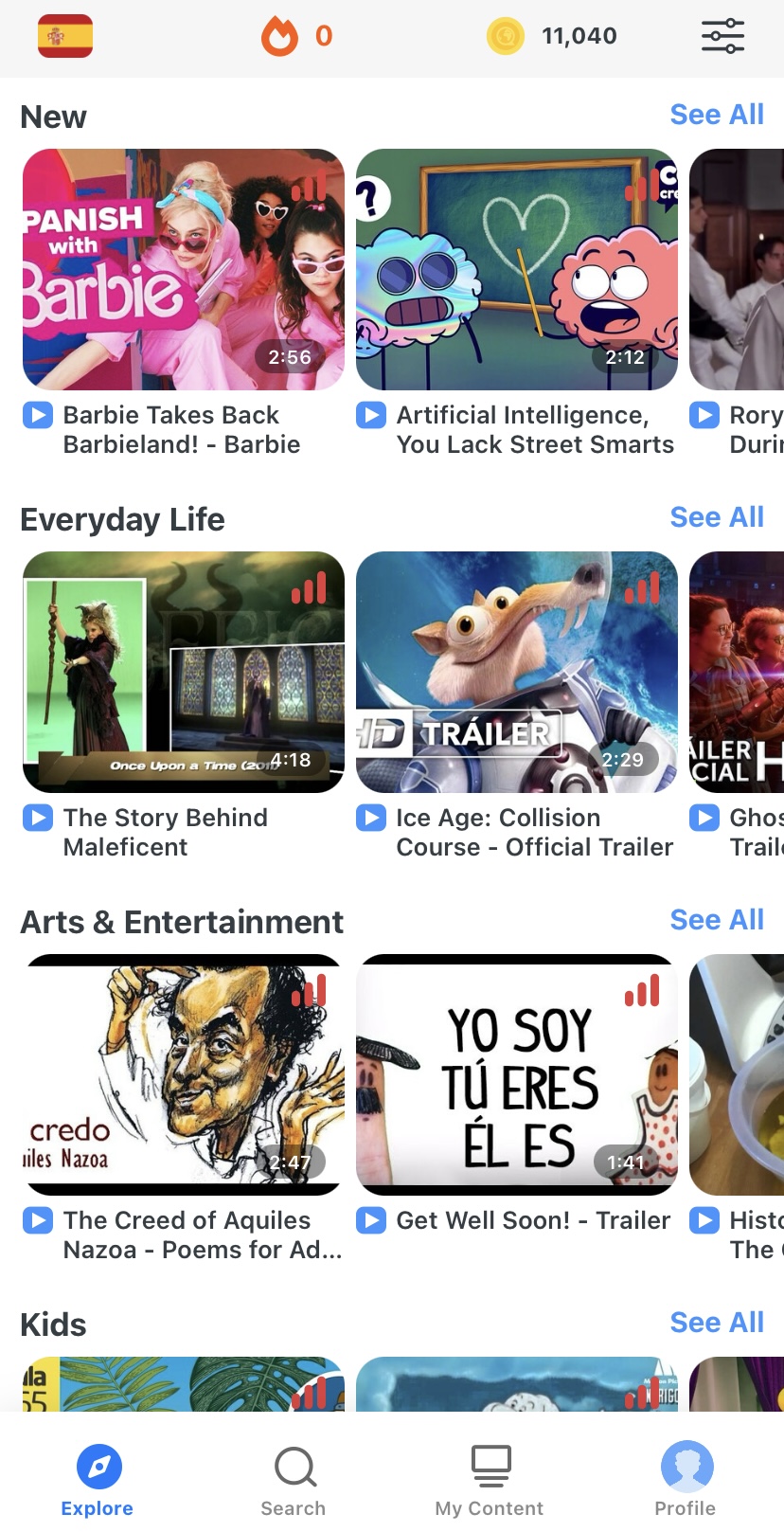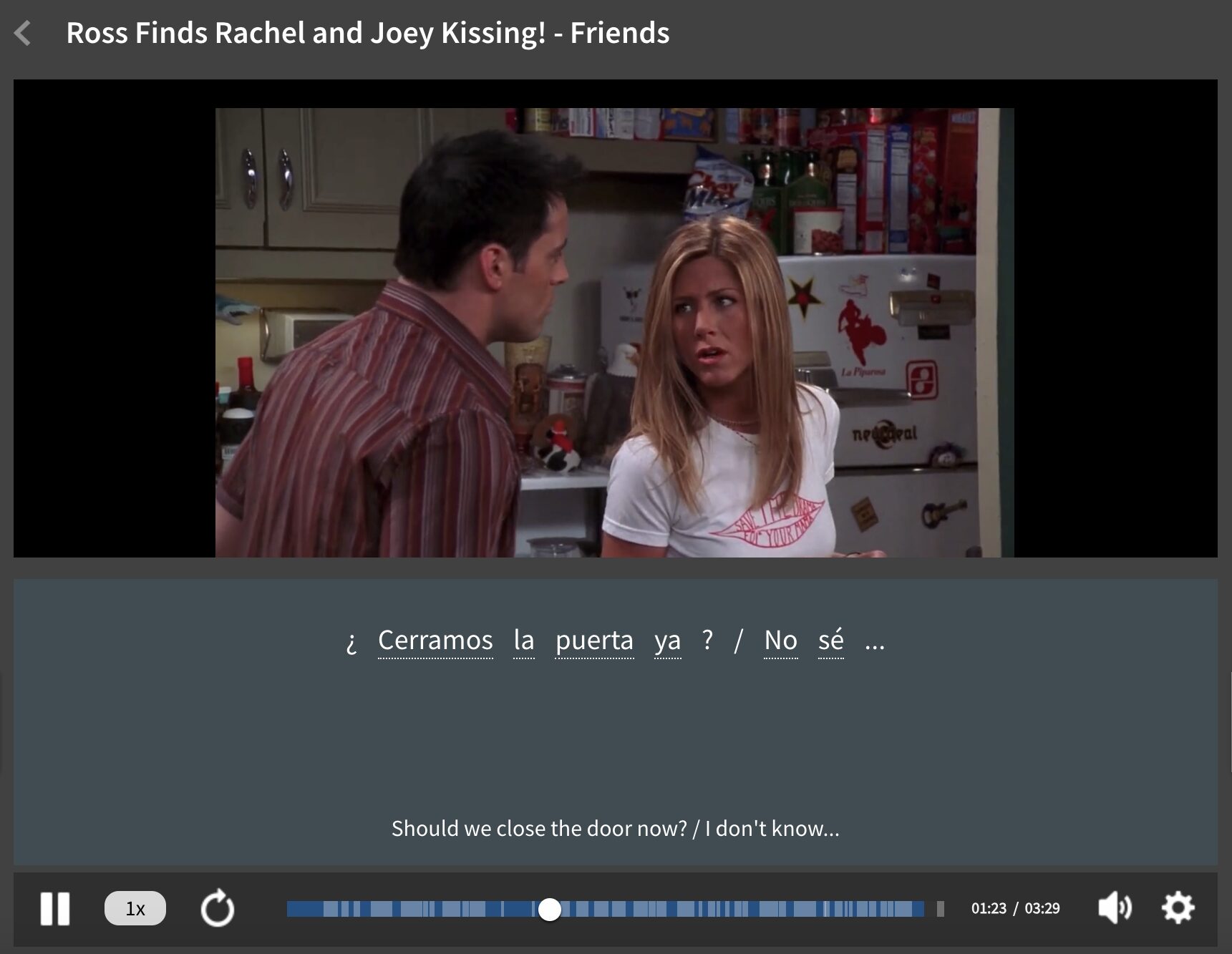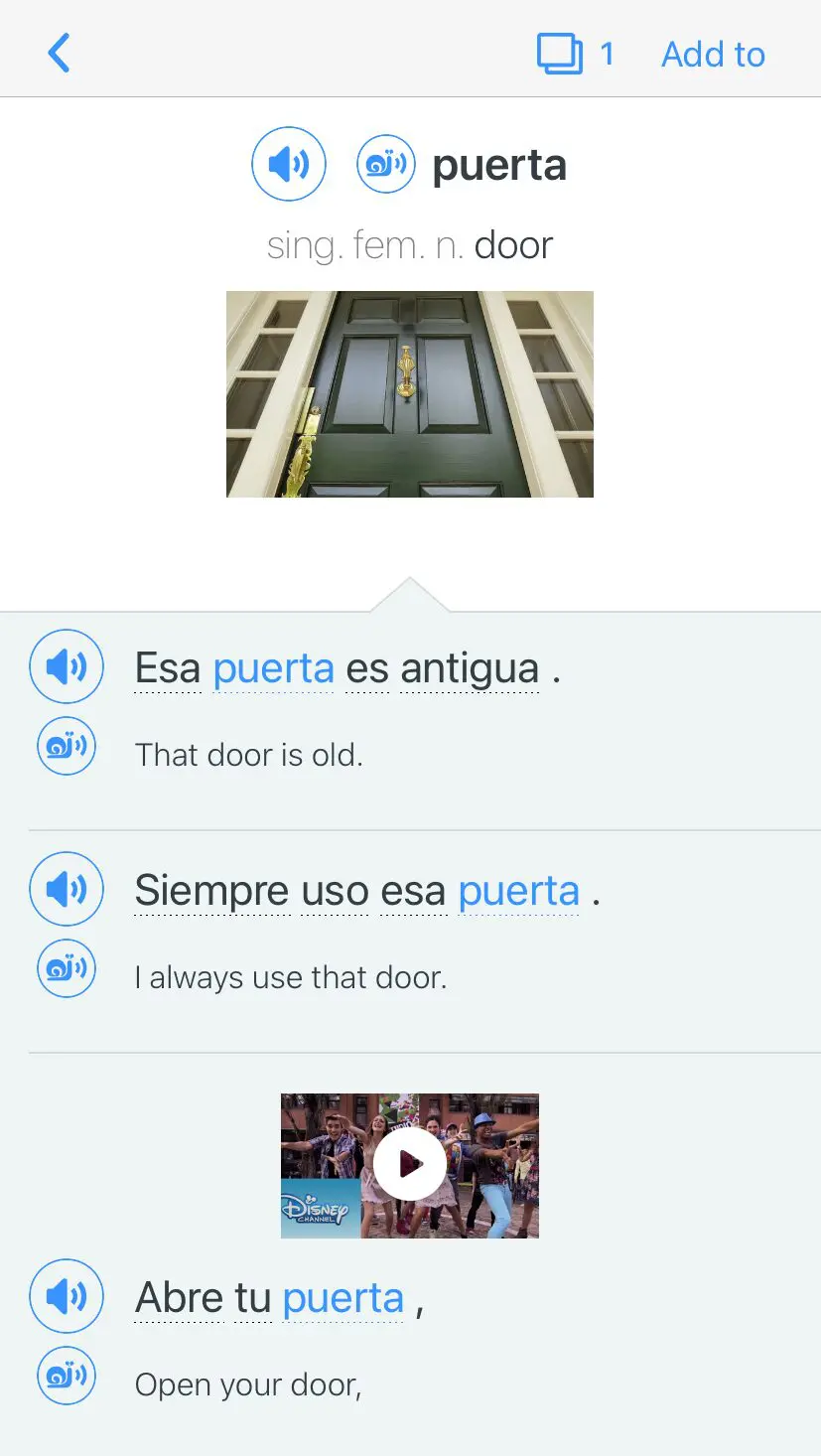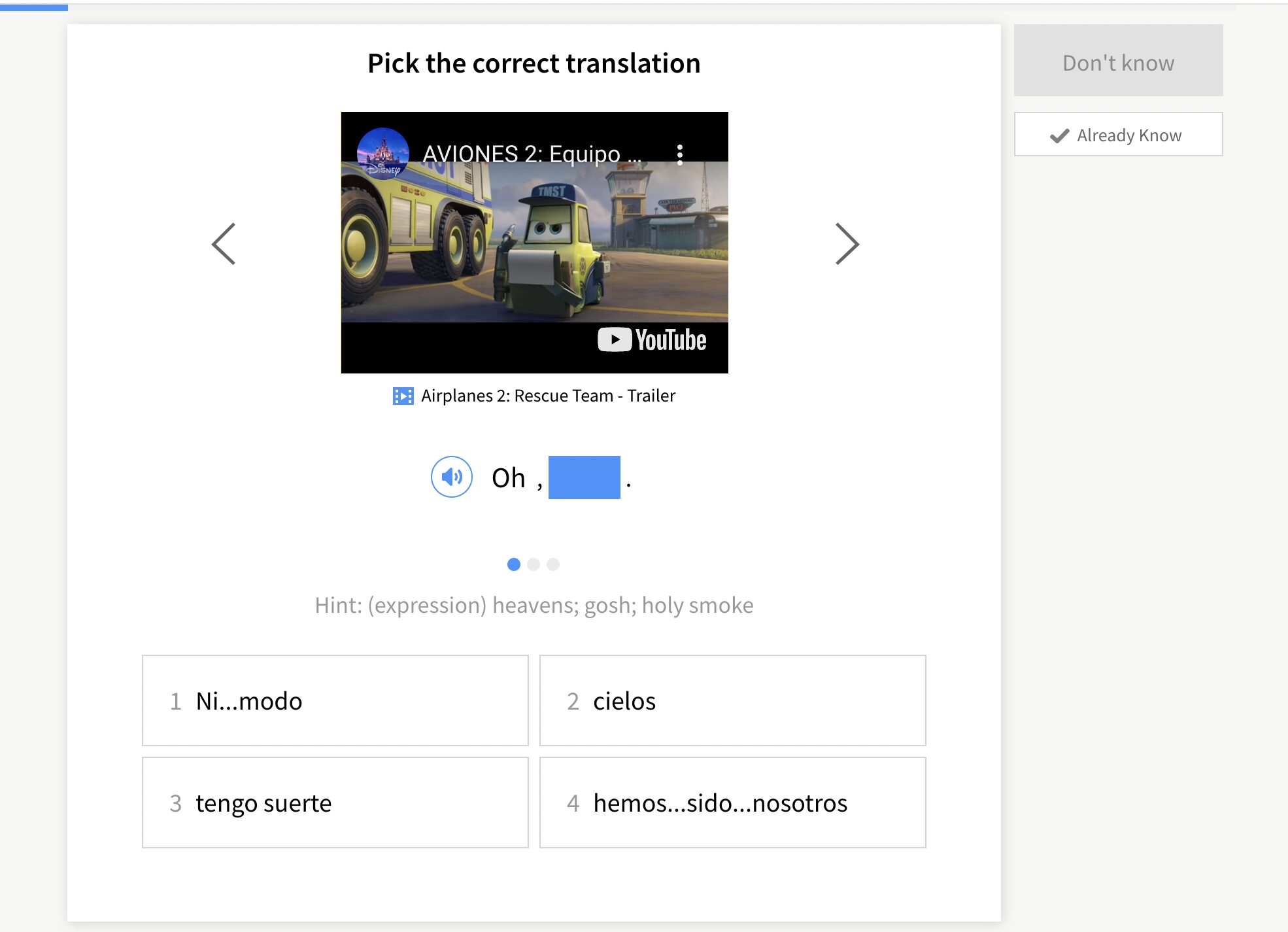Contents
- 1. Read What You Like
- 2. Eavesdrop and People Watch
- 3. Go to Language Exchanges
- 4. Watch Your Favorite TV Shows Dubbed in Spanish
- 5. Immerse Yourself in Spanish at Home
- 6. Attend Cooking Classes in Spanish
- 7. Organize Spanish Karaoke Nights
- 8. Gather Friends at an Escape Room in Spanish
- 9. Join a Spanish Comic Book or Cosplay Club
- 10. Play Role-Playing Games (RPGs) in Spanish
- And One More Thing…
10 Fun Ways to Learn Spanish

No one said that learning Spanish had to be a chore.
Granted, memorizing Spanish gender rules, accent mark placement and vocabulary may not be a walk in the park.
But there are other ways to learn—ways that are both super fun and incredibly effective. That’s where unconventional learning methods come in.
This post will cover the top 10 fun ways to learn Spanish. So spice up your Spanish learning and use some of these proven methods today. We promise you won’t regret it and you’ll be smiling as you learn.
Download: This blog post is available as a convenient and portable PDF that you can take anywhere. Click here to get a copy. (Download)
1. Read What You Like

Reading is a broad term. It doesn’t always involve translating from mundane textbook passages. Remember when you enjoyed reading? When you couldn’t stop turning the pages of “Harry Potter,” for example? Or when you voluntarily purchased a magazine?
Great news! This type of reading exists in Spanish, too. You can bring that magic back to your life.
When you’re learning the language, it’s probably best not to pick up a daunting read like the Spanish classic “Don Quijote” or “Cien años de soledad” (100 Years of Solitude). It’s clear that while you’re learning a language, you’ll be at a lower reading level in the target language than you are in your native tongue. So a good idea is to read children’s books when just starting out.
Search for your childhood favorites so some of the vocabulary is new but not too taxing. Many childhood and young adult books have been translated into Spanish, and you can ask your local bookstore or library to order it for you.
When I was starting out, I read all seven “Harry Potter” books in Spanish because, really, is there anything more fun than re-reading that series? Also I had basically memorized the plot, which was helpful for piecing together new vocabulary by context.
If books seem too daunting while you’re starting out, try delving into other media. If you read the news every day, you can supplement your daily sources with a newspaper in Spanish. Check out Spain’s “El País” or Mexico’s “El Universal,” or these resources to learn Spanish with the news.
Dive into lighthearted gossip stories and celebrity news with “People en Español,” “Vanidades,” “Latina Magazine” or “Alma.”
2. Eavesdrop and People Watch

Let’s be honest, we all do it.
So, why not eavesdrop with a clean conscience, secure in the fact that you’re doing it to improve your Spanish skills? No one can fault you for that, right? Eavesdropping may be one of the most fun ways to learn Spanish. It’s an activity we naturally do anyway, so it requires little mental prep.
You get to learn new and shocking things about strangers, and the topic of conversation is always a surprise just waiting to be uncovered. Even if you’re not immersed in a foreign country, Spanish is so widespread in the United States that, chances are, you can overhear it at a Latino grocery store, restaurant or in the subway.
When I studied Spanish in Granada, Spain, I often headed to the main plaza on weekends with the sole purpose of eavesdropping. I would sit on a bench and pretend to read a book, but attentive passersby may have noticed that I rarely flipped a page. It was a mere disguise, an excuse to be seated next to outdoor diners and pick up bits of their conversations. The quality of the meat, the nephew’s upcoming wedding plans, the strength of the sun in January – all riveting topics that helped me improve my Spanish comprehension and conversational vocabulary.
My proudest moment while learning Spanish came while I was riding the bus one day. I was eavesdropping on the couple behind me, who happened to be discussing the prospect of their imminent break-up. It wasn’t a happy event for them, but I celebrated the fact that I understood about 98% of what they said, including the curse words they threw at each other.
3. Go to Language Exchanges

In most moderate or large cities, both at home and abroad, you should be able to find an intercambio de idiomas, or a language exchange. And if that’s not the case, there are online Spanish language exchanges you can check out.
At an intercambio, you get to be the struggling student for a time and also the knowledgeable teacher.
Intercambios are a really fun way to learn Spanish because you get to meet someone new and (hopefully!) interesting in the process of studying a foreign tongue. Some intercambios are set up one-on-one. Others are more informal, attended by large groups of people and often held in bars. As everyone knows, Spanish flows a little better after a beer or two.
For a successful intercambio, be prepared to speak in both languages. You’ll need to offer up English practice in return for some good Spanish conversation – this isn’t a private lesson, after all. But try to make it equal as both parties need to practice. The conversation should be balanced so everyone gets what they came for.
4. Watch Your Favorite TV Shows Dubbed in Spanish

I’m not going to lie, telenovelas (Spanish soap operas) aren’t really my thing. And I don’t generally like to “waste” time in front of the TV if I’m not really enjoying a show. If you can get into them, ten points for you! You’ll catch cultural references while building your comprehension skills.
But I just couldn’t get hooked on telenovelas, so I did the next best thing. I started watching dubbed versions of my favorite American TV series. Most big series these days are dubbed in Spanish (which, incidentally, is a major reason for Spain’s low English levels). I watched the first eight seasons of “Grey’s Anatomy” in Spanish – in way too short a time period, I might add.
If a show is hugely popular at home, chances are good that it’s been dubbed to show abroad. Major ones are syndicated on television networks throughout Latin America and Spain. If you don’t have access to those channels, there’s always the internet. And don’t skip those Spanish commercials!
Here’s how to learn Spanish with everyone’s TV show favorite, “Friends”:
If cartoons are more your style, here’s a video using a Spanish-dubbed SpongeBob episode:
5. Immerse Yourself in Spanish at Home

Of course, the best and probably most fun way to learn Spanish is immersion in a Spanish-speaking country. But that’s not always feasible.
Luckily for you (and also, probably a reason you’re studying Spanish in the first place), Spanish is the second most widely-spoken language in the world. That means that, in this global age, you’re almost guaranteed to find some ways to “immerse” yourself at home. A few simple ideas:
- Go to a Mexican, Cuban, Argentinian, or you-name-it restaurant and focus on the menu in Spanish. Try your hand at ordering in Spanish (testing out your Spanish restaurant vocabulary), or ask the waiters a question or two if you deem it appropriate.
- Tune your radio to the local Spanish station. It’s almost guaranteed that most places have one nowadays. In addition to all the great Latin music, deciphering pesky commercials in-between songs can be a great, fun way to learn Spanish.
- Use FluentU to get a real Spanish immersion vibe. This program offers short video clips from authentic Spanish media along with learning tools like interactive subtitles, flashcards, personalized vocabulary quizzes and more.
- Do some of your shopping at a Latino grocery store, very prominent these days in cities all across the country. Try out your language skills and learn to cook with some more unusual ingredients! My latest find: pigs hooves. To take this tip to the next level, after you purchase all the ingredients, why not try to follow a recipe in Spanish? A quick internet search could get you cooking up a spicy tortilla soup or some Argentinian empanadas.
- Make an effort to read fliers, billboards and other announcements written in Spanish. Spanish is the most widely-spoken language in the United States after English; it’s not too difficult a task to encounter it in your everyday life.
(For more tips, check out this article on more ways to immerse yourself in Spanish when you don’t live abroad.)
6. Attend Cooking Classes in Spanish

Enroll in a cooking class that is conducted entirely in Spanish. Not only will you learn the language, but you’ll also pick up culinary terms and phrases.
Follow Spanish recipes, interact with the chef and classmates in Spanish, and maybe even enjoy a delicious Spanish meal at the end.
It’s a multisensory experience that engages your language skills in a practical and tasty way. And you’ll learn those Spanish classics like tortilla española, gambas a la plancha and tapas of every type.
And if you don’t have the time to attend an in-person cooking class, you can at least watch this helpful video to learn all the Spanish cooking vocabulary:
7. Organize Spanish Karaoke Nights

Organize or go to karaoke nights where the songs are in Spanish.
Singing along to Spanish tunes is an entertaining way to improve pronunciation and learn new vocabulary. Choose a variety of genres, from flamenco to reggaeton, to expose yourself to different accents and styles.
You’ll also likely find yourself memorizing lyrics, which can be a surprisingly effective method for language acquisition.
8. Gather Friends at an Escape Room in Spanish

Gather your friends and do an escape room experience conducted entirely in Spanish.
You’ll have to solve puzzles, communicate with your team and decipher clues—all in Spanish.
This immersive and interactive approach will not only enhance your language skills, it will also add an element of excitement and urgency.
It’s a great way to practice real-life communication in a pressure-free environment.
9. Join a Spanish Comic Book or Cosplay Club

Start or join a Spanish-language comic book club.
Reading comics in Spanish exposes you to conversational language, slang, and colloquial expressions.
Discussing the storylines and characters with fellow learners provides a social aspect to language learning.
You can find comics in Spanish from various genres, catering to different interests and language proficiency levels.
Try dressing up, too. Speaking in another language is a little like having a new personality, so why not combine the new Spanish you with a new look, too?
10. Play Role-Playing Games (RPGs) in Spanish

Dive into the world of tabletop role-playing games where you create characters, interact with imaginary worlds and engage in storytelling—all in Spanish.
This can be done with a group of friends or through online platforms. The immersive and interactive nature of RPGs will challenge you to think on your feet, use language creatively and work collaboratively with others—all while having a lot of fun.
Remember, the key to language learning is consistency and enjoyment. Find activities that align with your interests, and you’ll be more likely to stick with them over the long term. ¡Buena suerte! (Good luck!)
While learning a foreign language is never easy, there are plenty of ways to spice it up and make the learning process much more fun.
Download: This blog post is available as a convenient and portable PDF that you can take anywhere. Click here to get a copy. (Download)
And One More Thing…
If you’re like me and prefer learning Spanish on your own time, from the comfort of your smart device, I’ve got something you’ll love.
With FluentU’s Chrome Extension, you can turn any YouTube or Netflix video with subtitles into an interactive language lesson. That means you can learn from real-world content, just as native speakers actually use it.
You can even import your favorite YouTube videos into your FluentU account. If you’re not sure where to start, check out our curated library of videos that are handpicked for beginners and intermediate learners, as you can see here:
FluentU brings native Spanish videos within reach. With interactive captions, you can tap on any word to see an image, definition, pronunciation, and useful examples.
You can even see other videos where the word is used in a different context. For example, if I tap on the word "puerta," this is what pops up:
Want to make sure you really remember what you've learned? We’ve got you covered. Practice and reinforce the vocab from each video with learn mode. Swipe to see more examples of the word you’re learning, and play mini-games with our dynamic flashcards.
The best part? FluentU tracks everything you’re learning and uses that to create a personalized experience just for you. You’ll get extra practice with tricky words and even be reminded when it’s time to review—so nothing slips through the cracks.
Start using the FluentU website on your computer or tablet or, better yet, download our app from the App Store or Google Play.
Click here to take advantage of our current sale! (Expires at the end of this month.)












